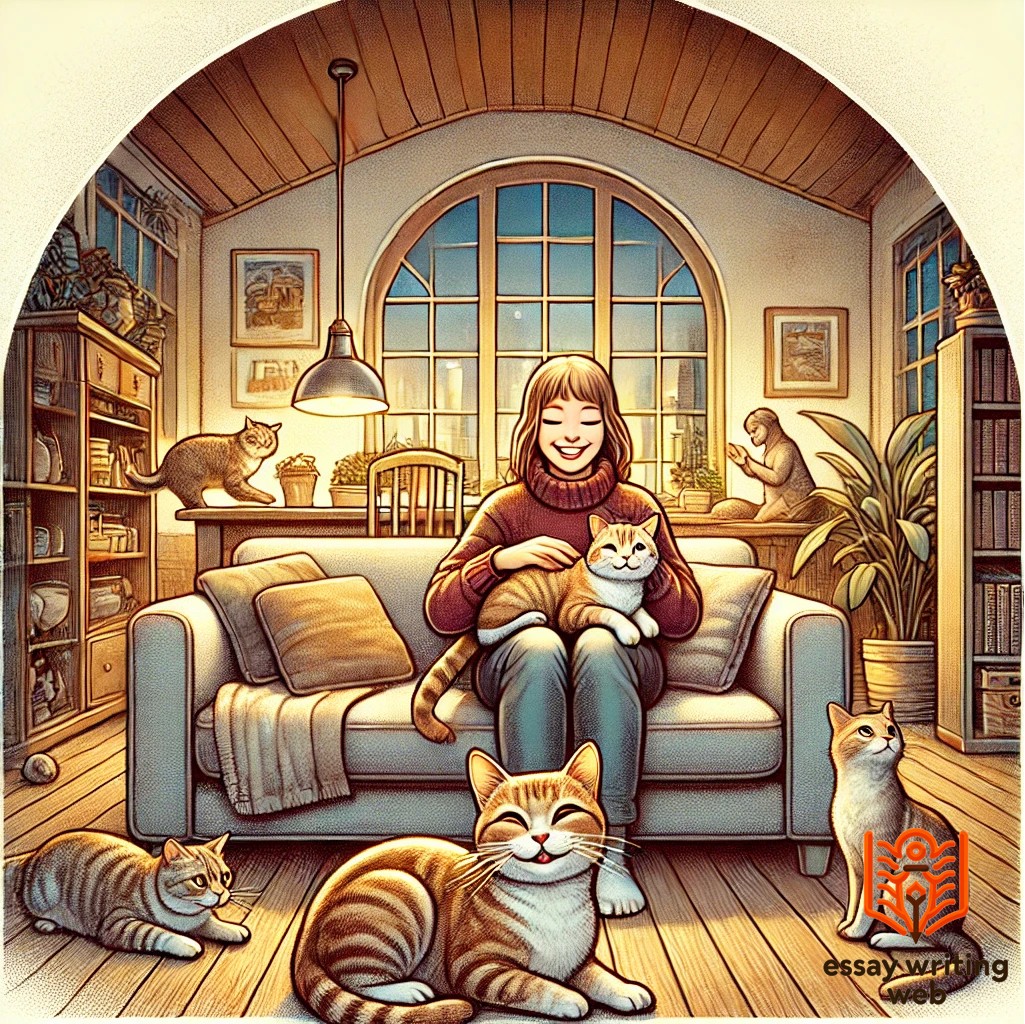 Essay Writing Web
Essay Writing Web

 14-09-2024
14-09-2024
 www.essaywritingweb.com
www.essaywritingweb.com
Cats, with their mysterious nature and captivating presence, have long been a beloved companion to humans. Domesticated for thousands of years, cats have carved a unique niche in human culture, transcending their role from mere hunters of vermin to cherished pets. Known for their independence, agility, and sharp senses, these animals exhibit a combination of grace and playfulness that appeals to millions of people worldwide.
A cat's physical attributes contribute to its undeniable charm. Their soft fur, ranging from short-haired to long-haired varieties, comes in an array of colors and patterns that make each one unique. Their expressive eyes, which can vary from shades of green and blue to amber and yellow, reflect their keen vision and curious nature. Despite their generally aloof demeanor, cats often form strong bonds with their owners, offering companionship and affection on their own terms.
They are naturally curious creatures, often exploring their surroundings with a sense of wonder and playfulness. Their independent nature allows them to be self-reliant, yet they still enjoy engaging in social interactions when they choose. Known for their cleanliness, cats spend a significant amount of time grooming themselves, which contributes to their overall appeal as low-maintenance pets.
In various cultures, cats hold symbolic meanings, often associated with mystery, elegance, and even luck. From ancient Egyptian reverence of cats to their modern status as internet celebrities, these felines continue to captivate human imagination. Their adaptability, intelligence, and soothing presence make them not only fascinating creatures but also cherished companions in countless households across the globe. As companions, protectors, and symbols, cats hold a timeless charm that enriches the lives of those who welcome them into their homes.
Cats are renowned for their sleek and agile physiques, which are well-suited to their natural instincts as hunters. Their physical characteristics are a blend of grace, strength, and versatility, making them some of the most fascinating animals in the animal kingdom. From their expressive eyes to their retractable claws, every feature of a cat is uniquely designed for survival, comfort, and interaction with its environment.
One of the most prominent features of a cat is its fur, which varies in length, texture, and color. Cats can have short, medium, or long coats, and their fur patterns come in a range of colors such as black, white, brown, orange, or gray. Some cats have solid-colored coats, while others may be striped, spotted, or multicolored. The texture of a cat’s fur also varies, from the sleek and shiny coat of a Siamese to the thick, fluffy fur of a Persian. This variety makes each cat visually unique and contributes to their charm.
A cat’s eyes are another defining feature. Their large, almond-shaped eyes come in striking colors such as green, blue, amber, and sometimes even odd-eyed, where each eye is a different color. Cats possess excellent night vision, allowing them to hunt in low-light conditions. Their eyes also have a reflective layer, known as the tapetum lucidum, which enhances their ability to see in the dark.
Cats are also known for their flexible bodies. Their long, slender limbs and powerful muscles allow them to run, jump, and climb with ease. Their retractable claws, sharp and strong, are perfect for catching prey or climbing trees. The pads on the bottom of their paws are soft and sensitive, helping them to move silently.
In conclusion, a cat’s physical characteristics—whether it's their fur, eyes, or limbs—make them perfectly adapted for both domestic life and survival in the wild. Their beauty, grace, and athleticism are qualities that make them not only intriguing animals but also beloved pets.
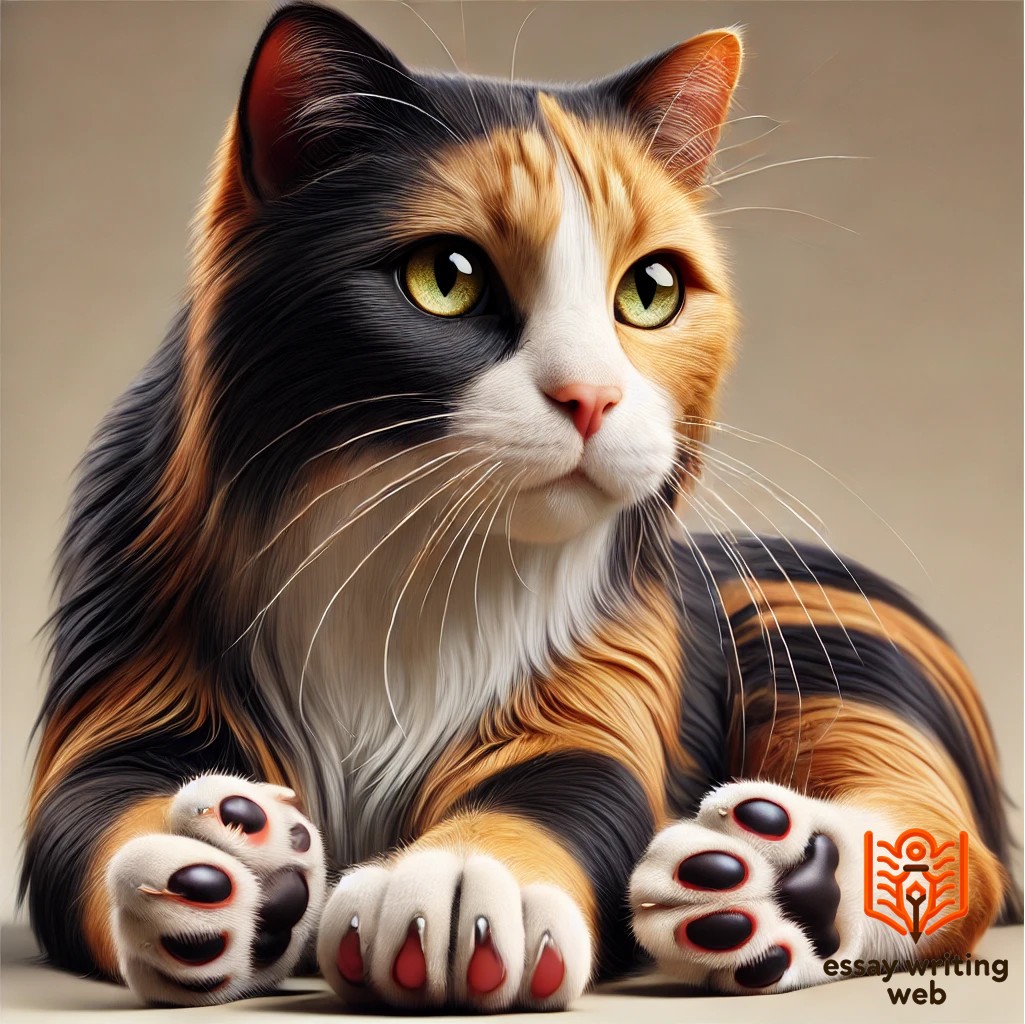
Cats vary widely in size and appearance depending on their breed, but most domestic cats fall within a relatively small size range. On average, a healthy adult cat weighs between 4 to 5 kilograms (8 to 11 pounds) and measures about 23 to 25 centimeters (9 to 10 inches) in height at the shoulder. Some breeds, like the Maine Coon, can grow much larger, reaching up to 9 kilograms (20 pounds), while smaller breeds like the Singapura are known for their petite frames.
In terms of appearance, cats are incredibly diverse. Their fur can range from short, sleek coats to long, fluffy ones. Common coat colors include black, white, gray, orange, and brown, often combined in different patterns such as tabby, calico, and tortoiseshell. Some cats have solid-colored coats, while others have intricate stripes or spots.
A cat’s face is typically round or wedge-shaped, with almond-shaped eyes that come in striking colors like green, blue, or amber. Their ears are pointed and alert, reflecting their sharp sense of hearing. Cats’ bodies are known for their flexibility, enabling them to twist and contort with ease, while their retractable claws help them grip surfaces and protect themselves.
In essence, a cat’s size and appearance are tailored for agility, stealth, and charm.

Cats are known for their beautiful and diverse coats, which come in a wide range of fur types and colors. The texture, length, and color of a cat’s fur not only determine its appearance but also play a role in its health and adaptability to various environments. Understanding the different types of fur and the variety of colors that cats can have adds to the appreciation of their uniqueness.
In terms of fur type, cats are generally classified into two categories: short-haired and long-haired. Short-haired cats, like the British Shorthair or the American Shorthair, have sleek, smooth coats that require minimal grooming. Their fur lies flat against the body, giving them a streamlined appearance. Long-haired cats, such as the Persian or Maine Coon, have thick, fluffy coats that require regular grooming to prevent matting. These cats have an elegant, luxurious look, with their fur often flowing as they move.
When it comes to color, cats exhibit an incredible variety. Solid colors include black, white, gray, and orange, each providing a distinct look. Cats can also have bi-color or tri-color coats, such as the black-and-white “tuxedo” or the colorful calico. Tabby cats feature stripes, swirls, or spots in shades of brown, gray, or orange, often with a distinctive “M” marking on their foreheads. Tortoiseshell cats, usually females, have a patchwork of orange and black, creating a striking and unique pattern.
In addition to these variations, some cats have pointed coats, where the fur on their ears, face, paws, and tail is darker than the rest of their body. This pattern is typical of breeds like the Siamese and Birman.
In conclusion, the types of fur and colors in cats are as diverse as their personalities. Whether short-haired or long-haired, solid or patterned, each cat's coat adds to its individuality and appeal, making them a beloved part of many households.
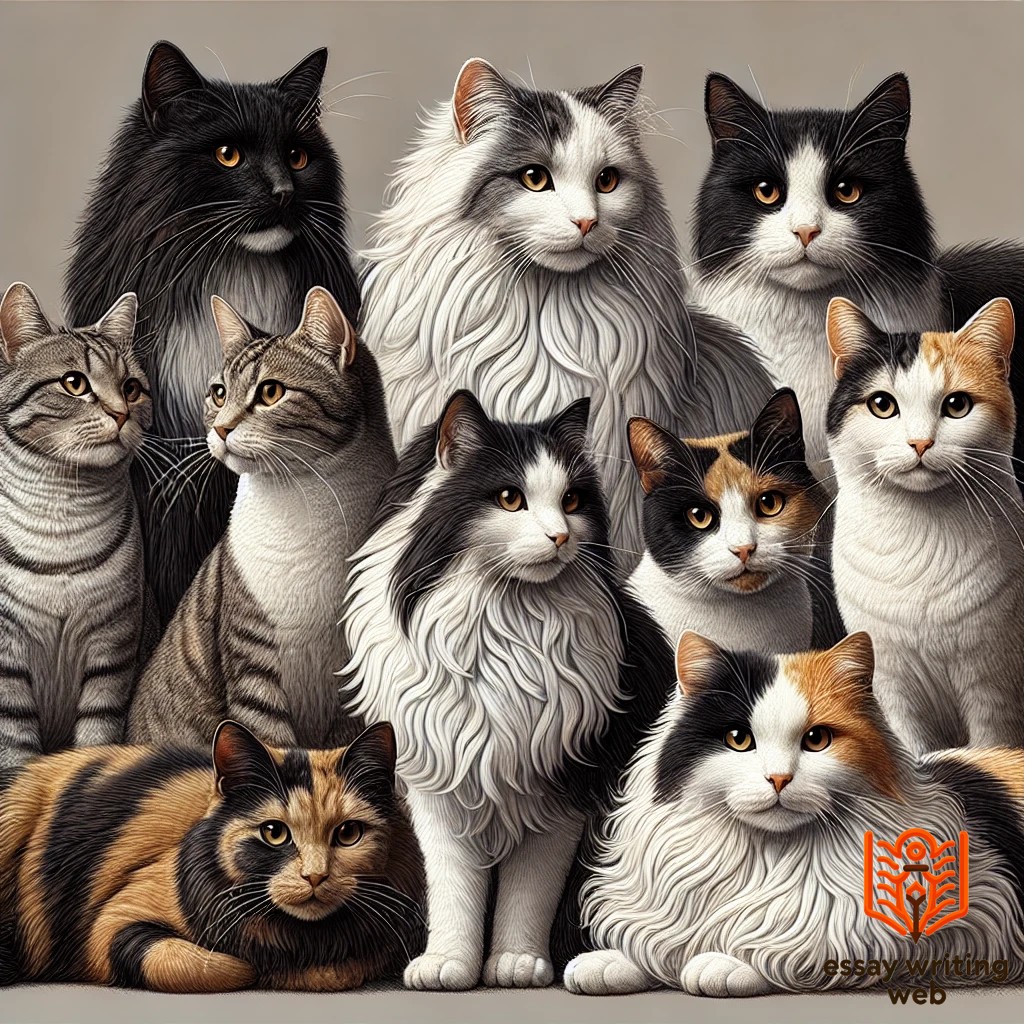
Cats are one of the most popular pets in the world, and their diversity in breed, appearance, and personality makes them unique companions. Over the years, many types of cats have evolved, each with its own distinct characteristics, size, and behavior. Broadly, cats can be categorized into domestic, wild, and hybrid breeds, each with its own appeal.
Domestic cats, also known as house cats, are the most commonly kept cats. They are further divided into various breeds, each offering something different in terms of temperament and appearance.
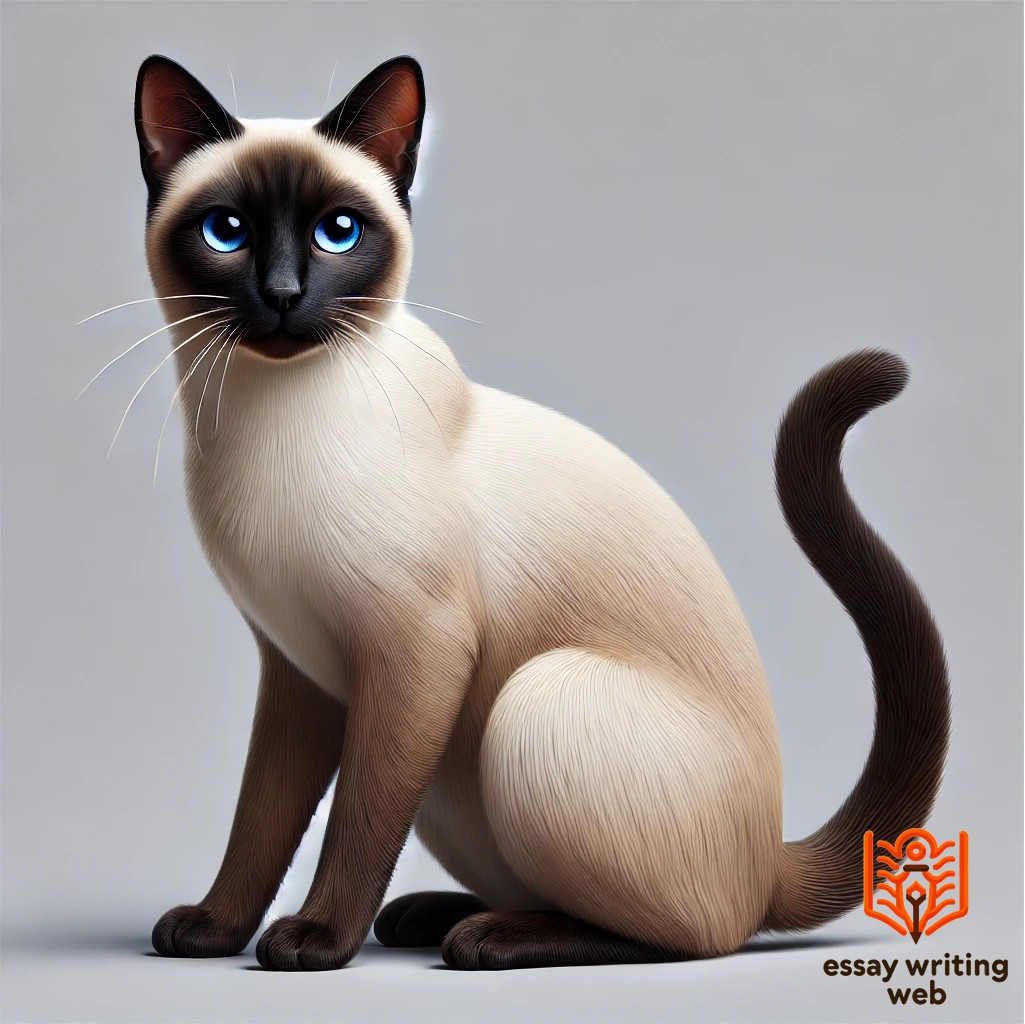
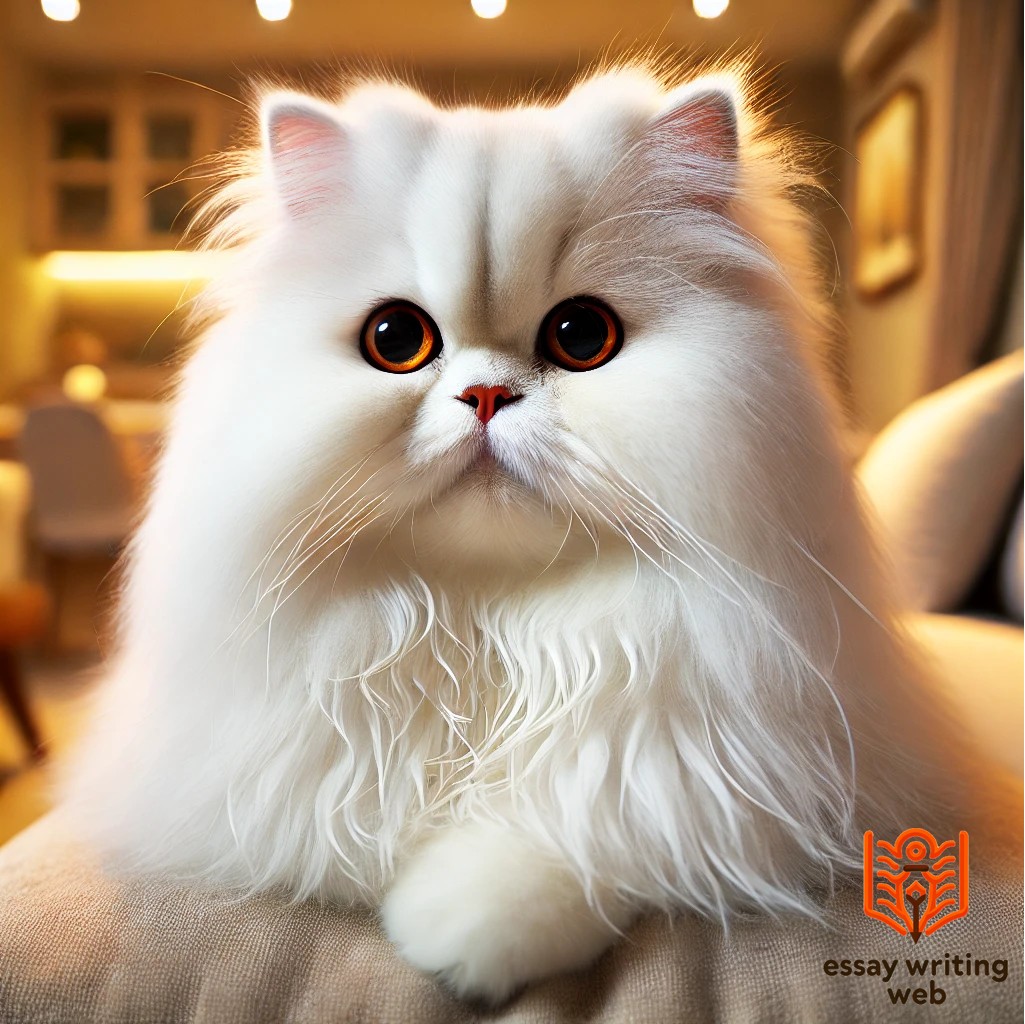
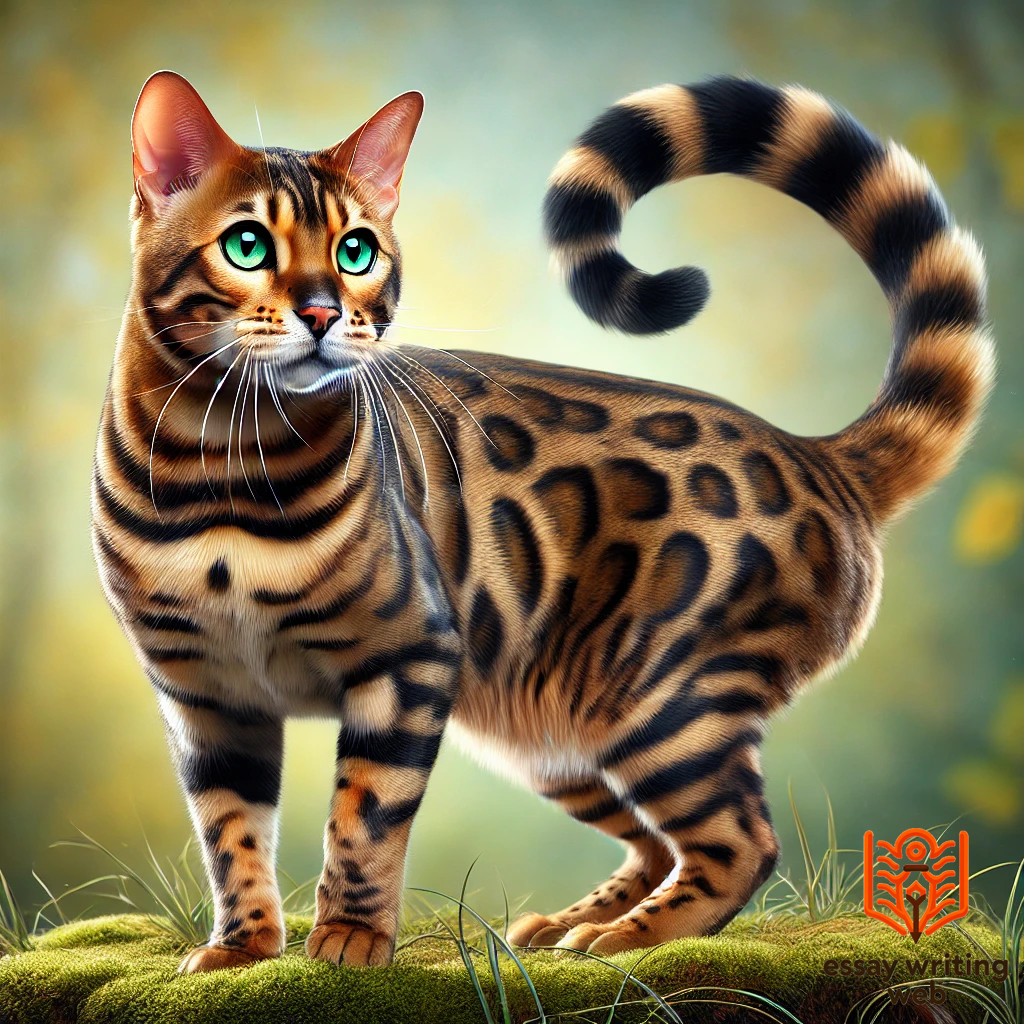
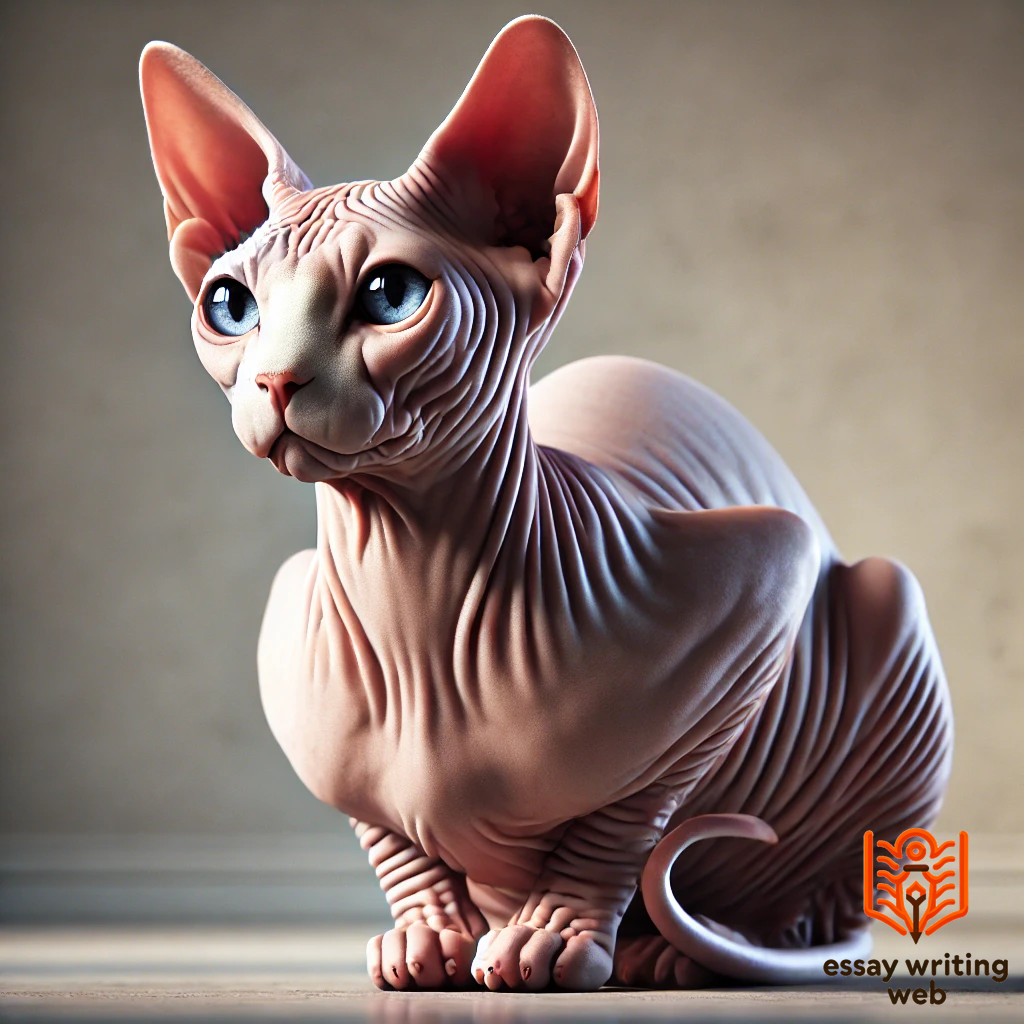
Hybrid cats are a mix of domestic and wild species, often resulting in a blend of both appearances and traits. These cats are becoming more popular among cat enthusiasts who desire exotic-looking pets with manageable behavior.
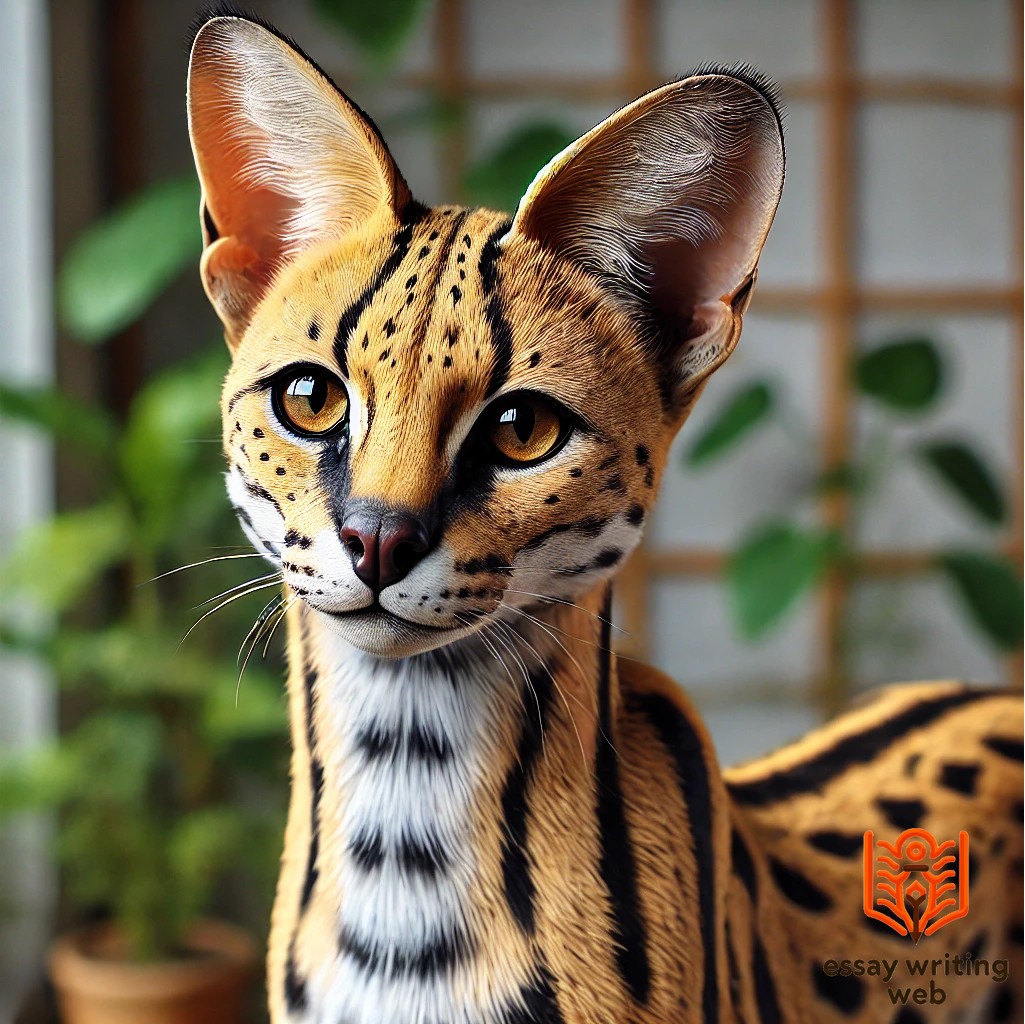

Cats have been beloved companions for centuries, and with their global popularity, various breeds have emerged, each with distinct characteristics and traits. From sleek and elegant to fluffy and robust, different cat breeds appeal to people in different parts of the world. Here are some of the most popular cat breeds admired for their beauty, temperament, and companionship.
The Persian cat is perhaps one of the most recognized and loved cat breeds worldwide. Known for its long, luxurious coat and round, flat face, Persians have a calm and gentle demeanor. They enjoy lounging and require regular grooming due to their dense fur. Their easygoing nature makes them popular in households where they can relax and receive attention from their owners.
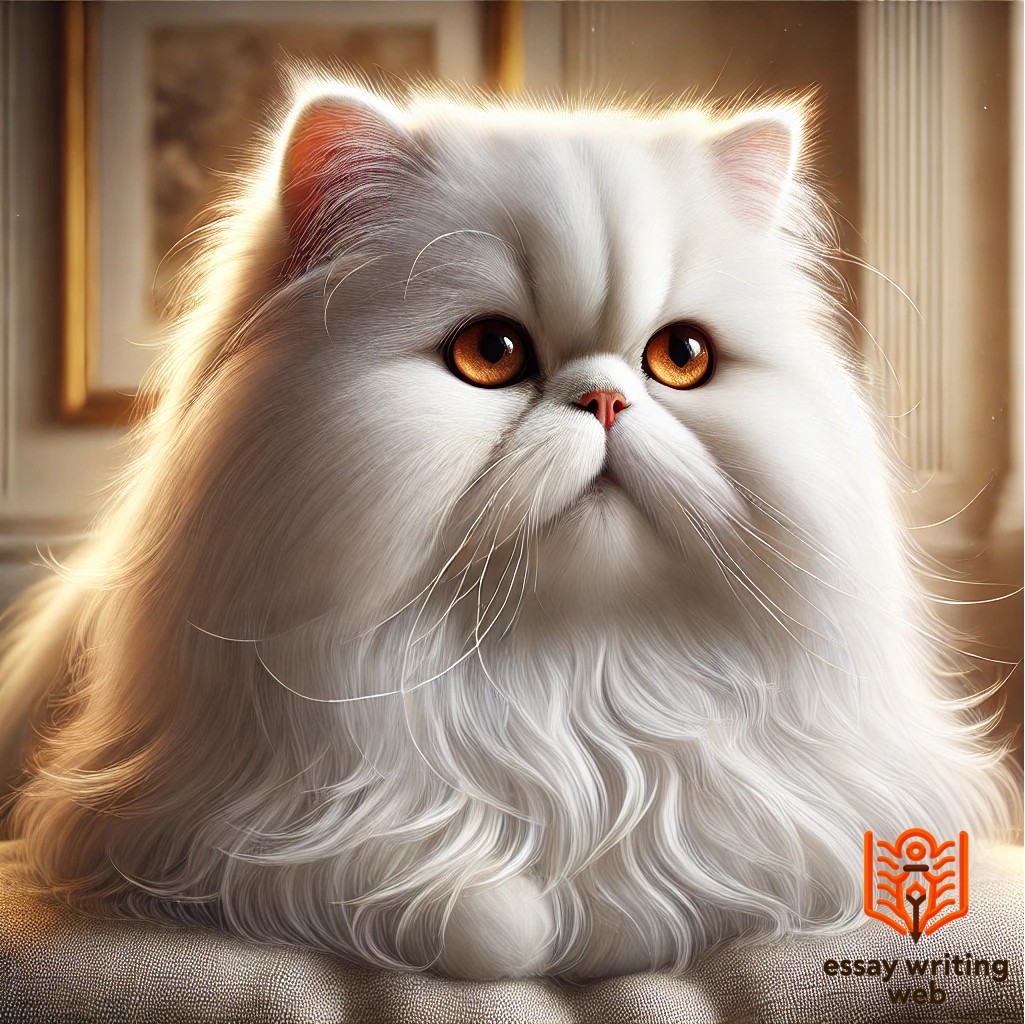
Siamese cats are known for their striking appearance and vocal personality. With sleek bodies, short coats, and striking blue eyes, they are often described as elegant and sophisticated. Siamese cats are extremely social and thrive on interaction with their humans. Their talkative nature and playful behavior make them popular companions, especially for those seeking a pet that loves attention.
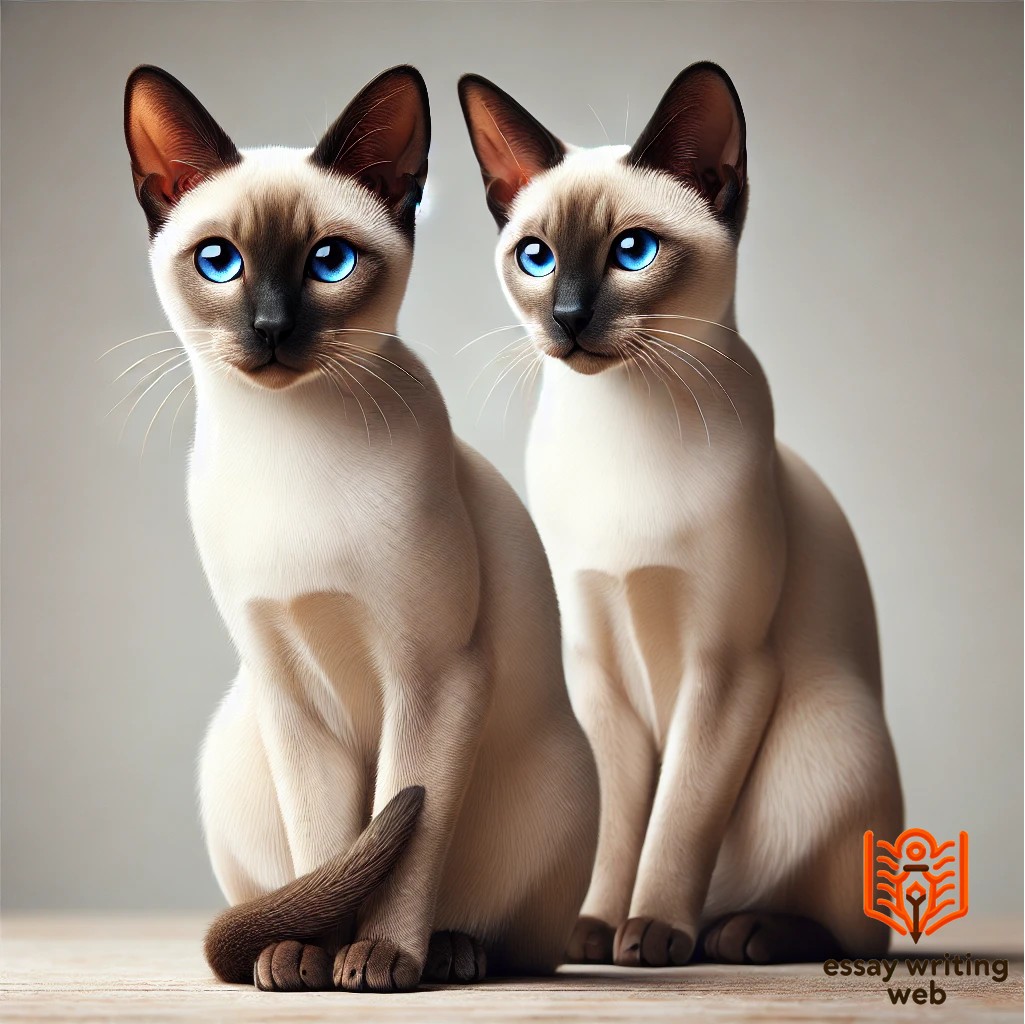
One of the largest cat breeds, the Maine Coon is famous for its size, strength, and friendly temperament. Despite their imposing size, Maine Coons are known as "gentle giants" due to their affectionate and social nature. Their long, thick fur protects them from harsh weather, making them well-suited for colder climates. Maine Coons are great for families, as they tend to get along well with children and other pets.

The Bengal cat stands out for its wild, leopard-like appearance. With a short coat covered in spots and rosettes, Bengals have a striking, exotic look. This breed is highly active, intelligent, and loves to climb, making them ideal for owners who enjoy a cat with a lot of energy. Despite their wild appearance, Bengals are affectionate and enjoy human companionship, adding to their popularity.

Ragdolls are known for their calm, laid-back personalities. They get their name from the tendency to go limp when picked up, much like a ragdoll. These large, blue-eyed cats have semi-long fur and are often affectionate, making them excellent companions. Ragdolls enjoy being around people and are gentle, making them perfect for families with children or other pets.
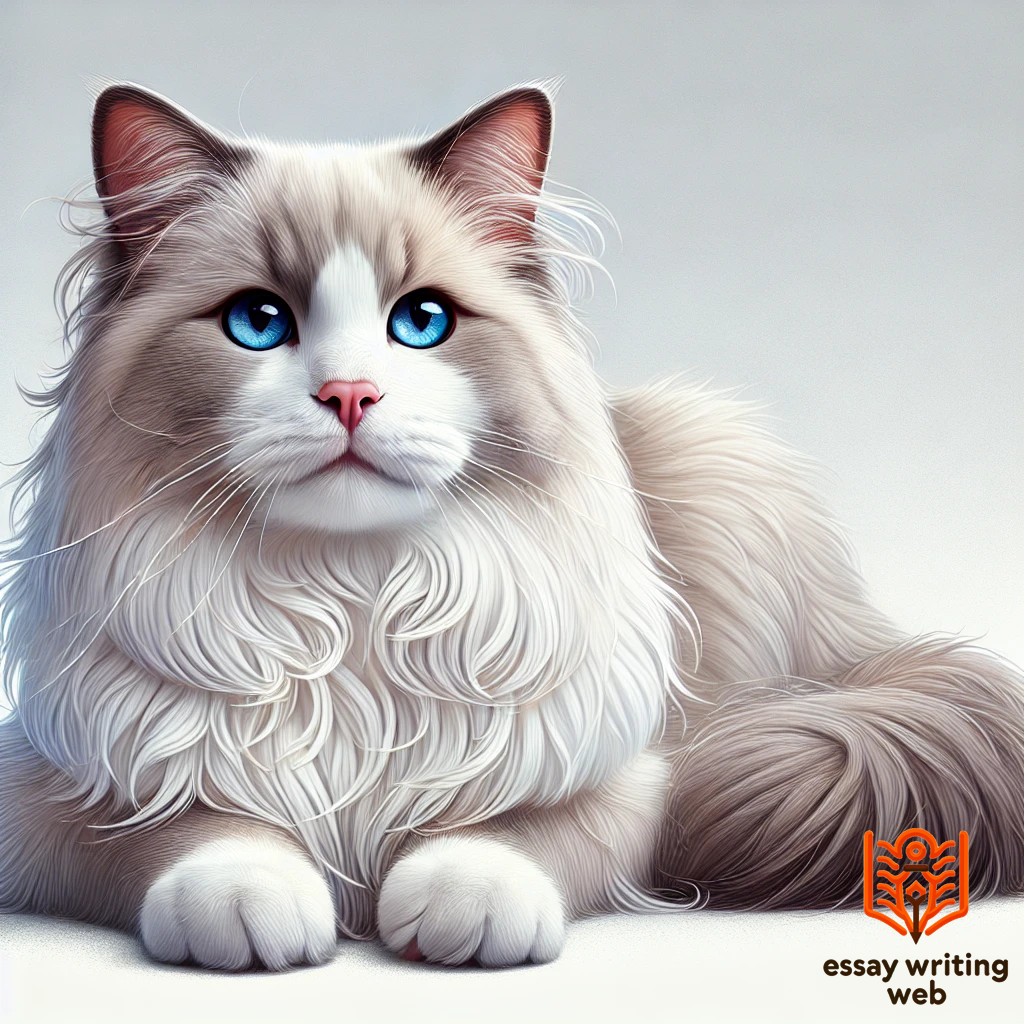
The British Shorthair is a breed known for its round face, plush coat, and calm personality. Often recognized by their gray-blue color, they also come in various other hues. British Shorthairs are independent but loving, making them easy to care for. They are not overly active, preferring a quiet life indoors, making them great companions for urban dwellers.
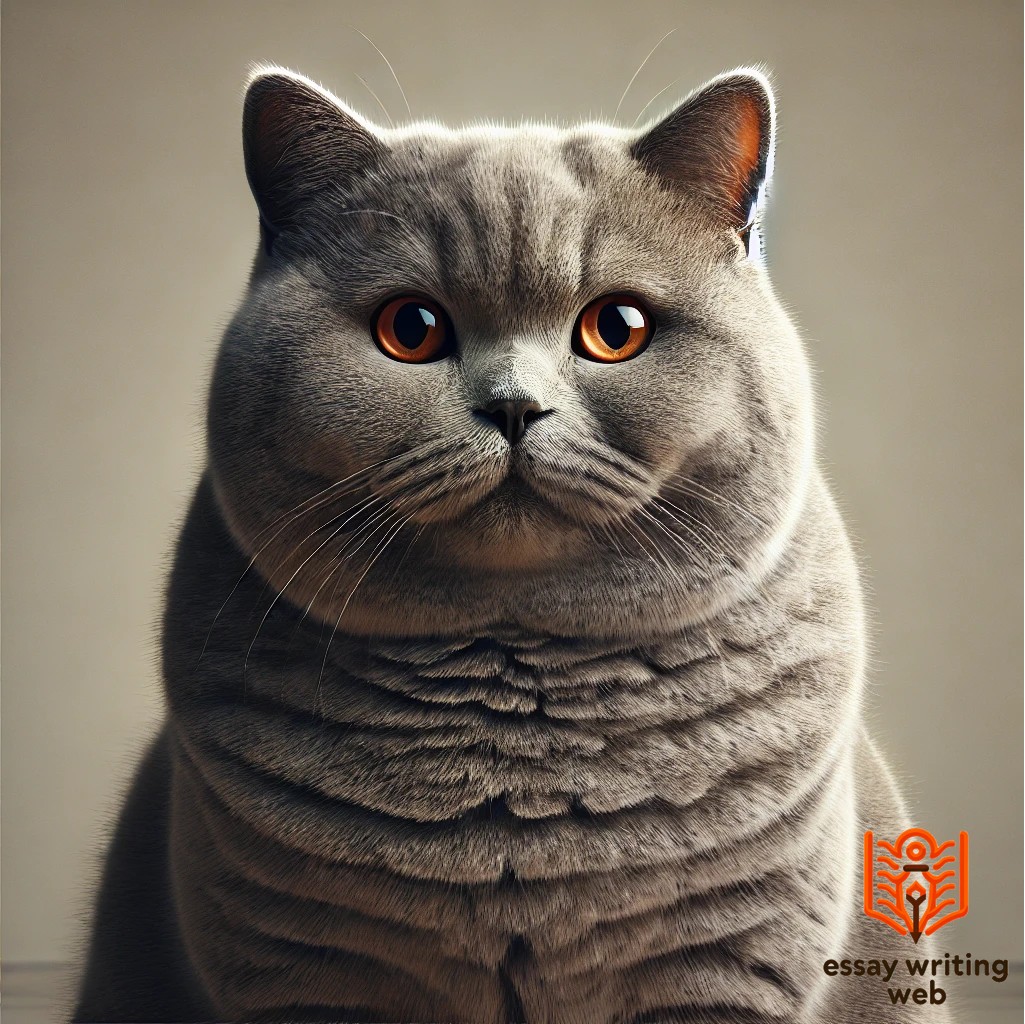
The Sphynx is one of the most unusual and recognizable cat breeds due to its lack of fur. Despite being hairless, Sphynx cats are warm to the touch and require special care to maintain skin health. They are known for their playful, outgoing nature and enjoy being the center of attention. Sphynx cats are affectionate and thrive on human interaction, making them beloved pets for those seeking a unique companion.
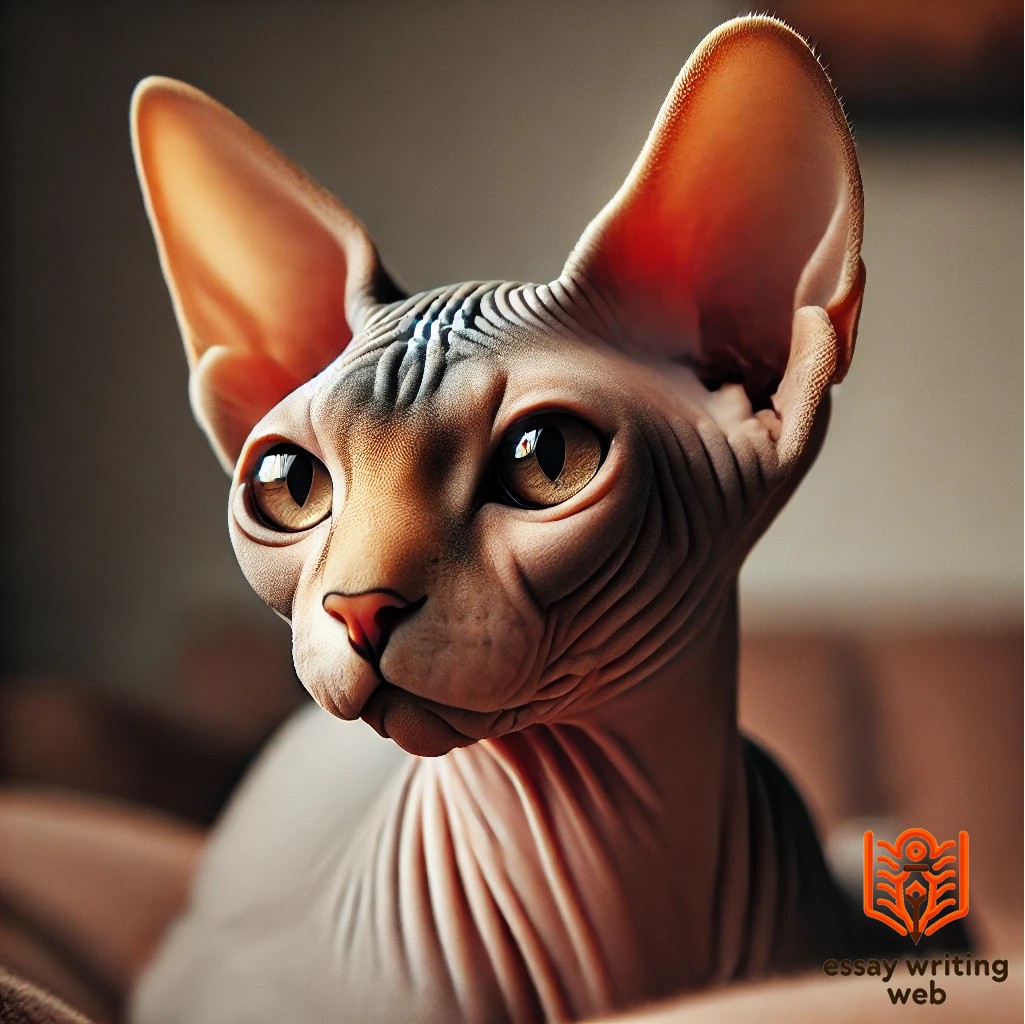
Known for their distinctive folded ears, the Scottish Fold is a breed that captures hearts with its sweet, owl-like appearance. These cats have rounded heads and large, expressive eyes. Scottish Folds are affectionate, intelligent, and enjoy human company, often following their owners around the house. Their calm and friendly disposition makes them popular among cat lovers.
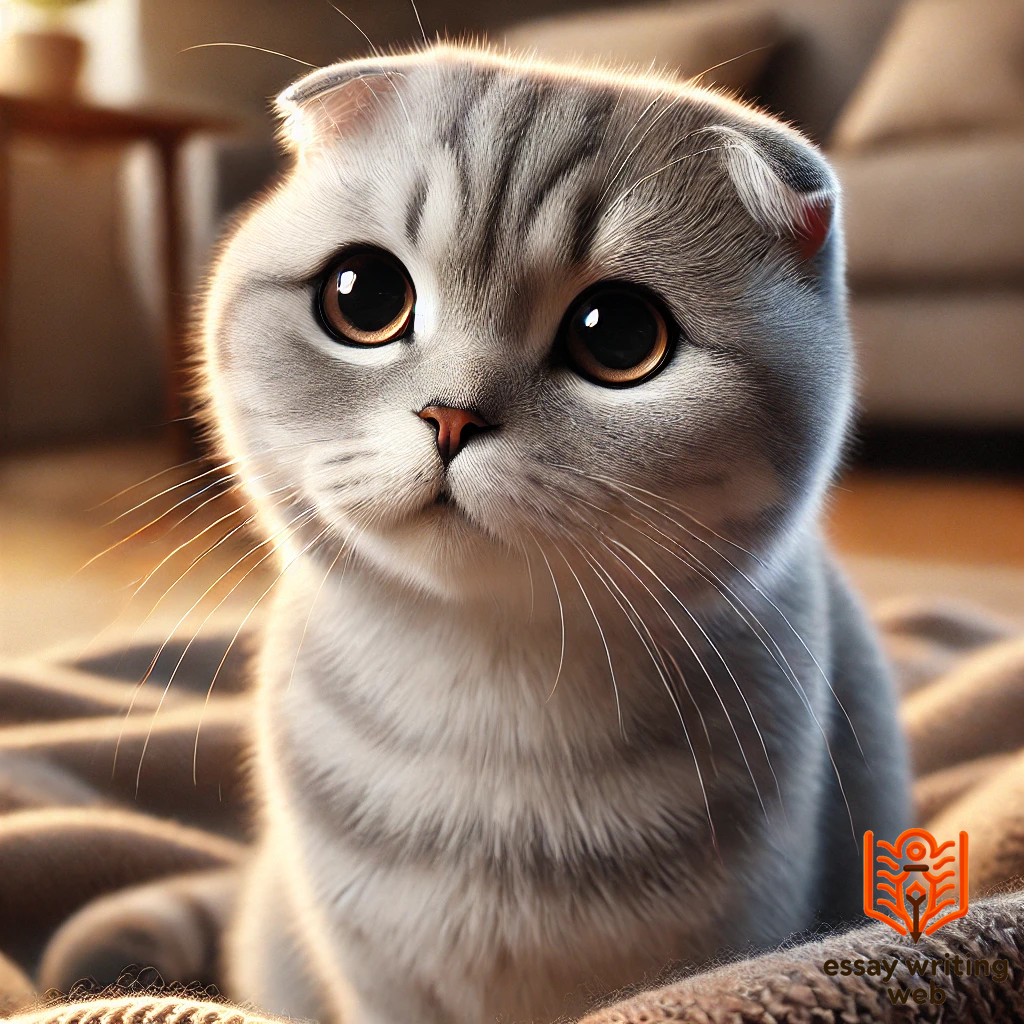
Abyssinians are one of the oldest known cat breeds, known for their slender bodies, short coats, and vibrant colors, usually reddish-brown. They are active, curious, and love to explore their surroundings. Abyssinians are also highly social and enjoy engaging with their owners, making them great for active households.
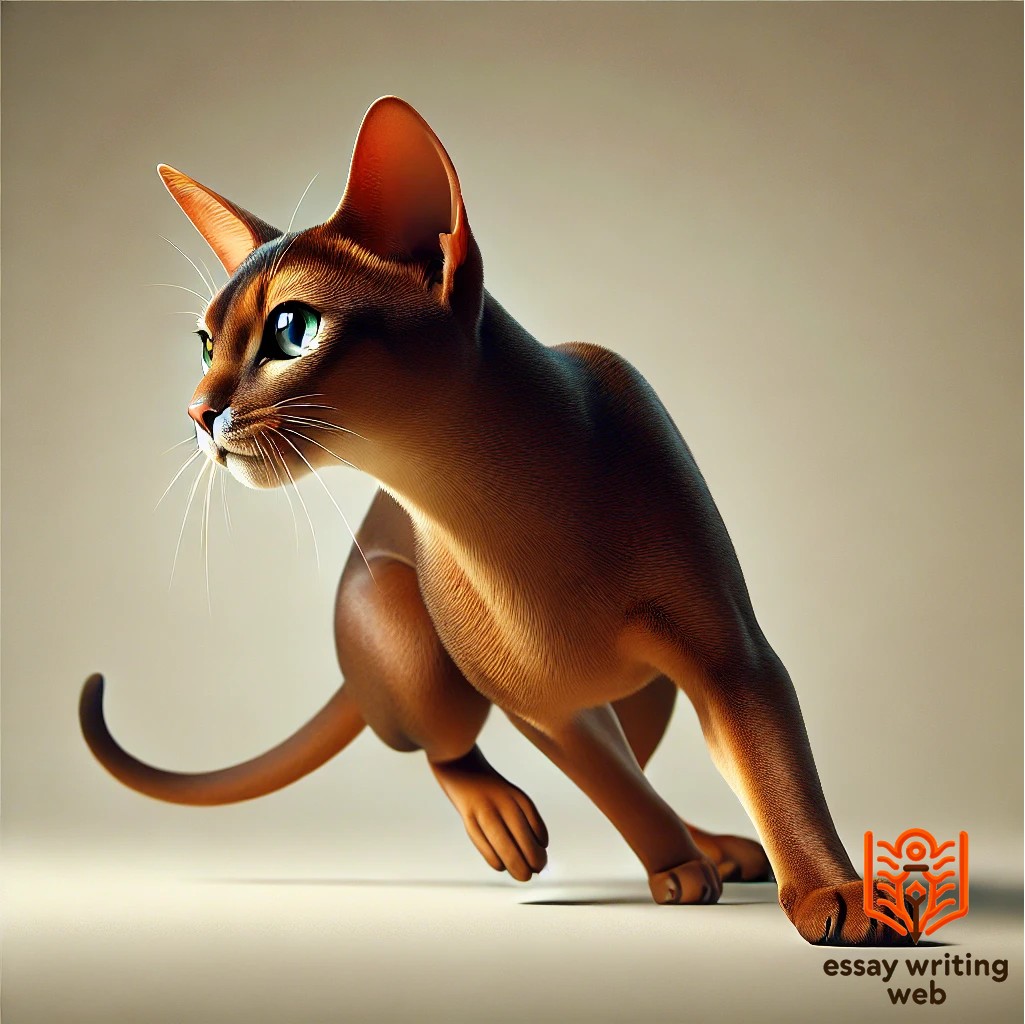
The Russian Blue is known for its stunning silvery-blue coat and striking green eyes. These cats are quiet, reserved, and form strong bonds with their owners. They are low-maintenance due to their short coat and tend to be independent, making them ideal for people who want a calm, elegant companion without the need for constant attention.
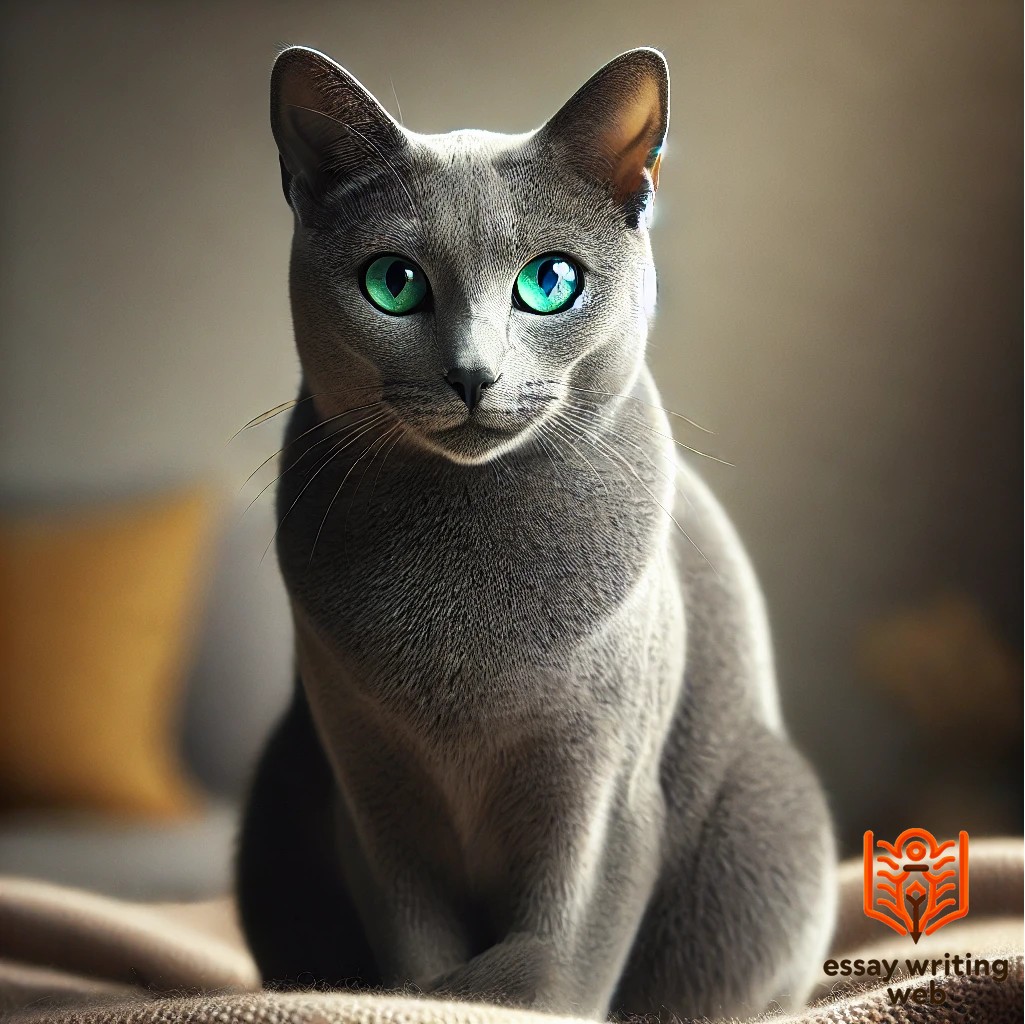
Cats are known for their independent yet affectionate nature, making them unique companions. Their behavior and habits are often shaped by both instinct and environment, creating a blend of curiosity, playfulness, and self-sufficiency.
One of the most notable behaviors in cats is their curiosity. They love to explore new places and objects, often squeezing into small spaces or climbing to high vantage points. This curiosity is linked to their hunting instincts, as wild cats are natural predators, and domestic cats still retain this behavior, frequently stalking toys or even small insects.
Cats are also creatures of habit. They are known to establish routines, especially when it comes to feeding, grooming, and sleeping. They typically sleep for 12 to 16 hours a day, conserving energy for bursts of activity. This routine allows them to be both restful and active at different times of the day.
Self-grooming is another significant habit. Cats spend a large portion of their time grooming themselves to keep their fur clean and remove loose hair. This habit also helps regulate their body temperature and provides a calming effect.
In conclusion, cats are fascinating creatures whose behavior reflects a blend of wild instincts and domestic adaptation, making them both independent and loving companions.
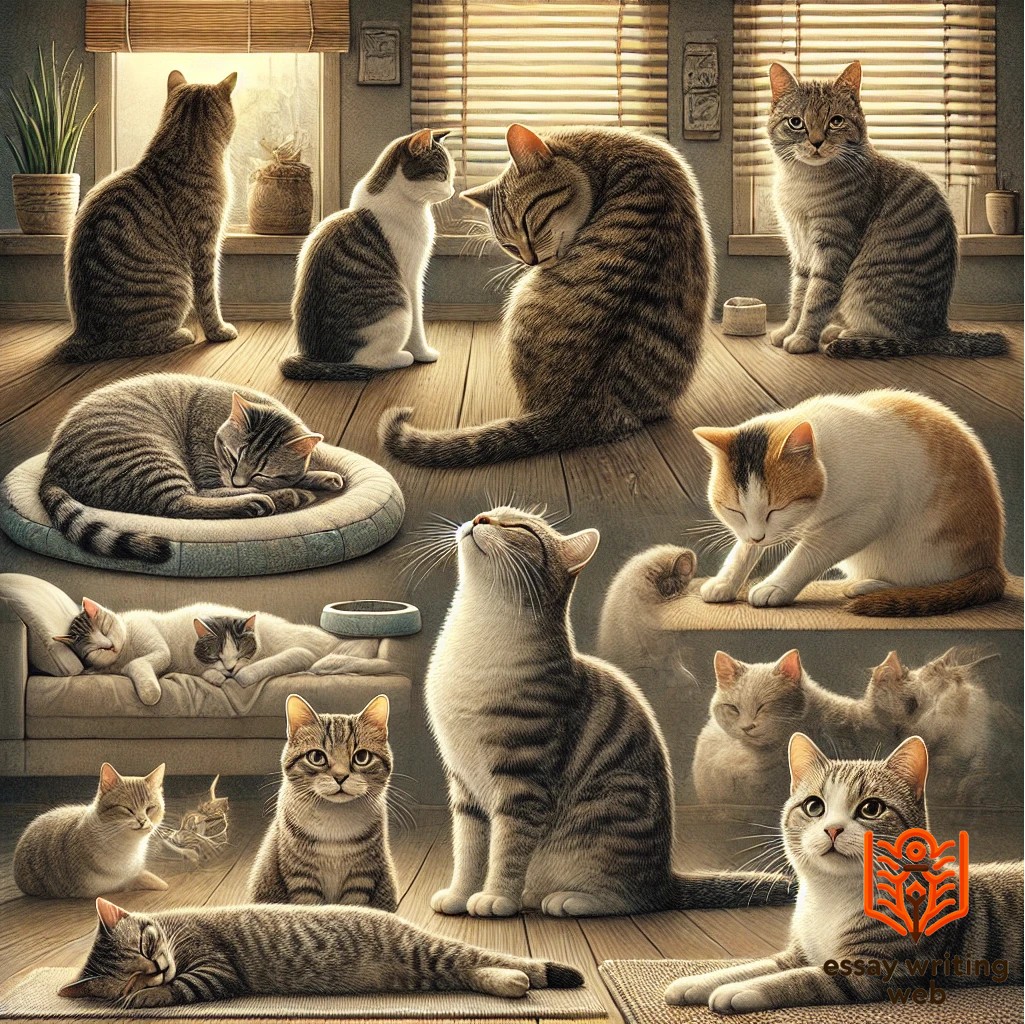
Cats are known for their love of sleep, often spending a significant portion of their day resting. On average, a domestic cat sleeps between 12 to 16 hours a day, though some cats may sleep even more, especially as they age. This high sleep requirement is a remnant of their evolutionary history as predators. In the wild, cats need to conserve energy for hunting, so long periods of rest allow them to be ready for short bursts of intense activity.
Cats are crepuscular animals, meaning they are most active during dusk and dawn. This explains why they may seem more playful or energetic early in the morning or late in the evening. During the day, they prefer to nap in quiet, comfortable spots, often curled up in cozy spaces where they feel safe.
Interestingly, cats don’t sleep deeply all the time. Much of their rest is made up of light naps, where they remain semi-alert and can quickly wake up if needed. These “catnaps” allow them to conserve energy while still being aware of their surroundings. Cats also enter periods of deep sleep, especially after physical activity, which is essential for their overall health and well-being.
In conclusion, cats' sleeping patterns are shaped by their instincts, and their ability to balance rest and activity makes them efficient and agile creatures.
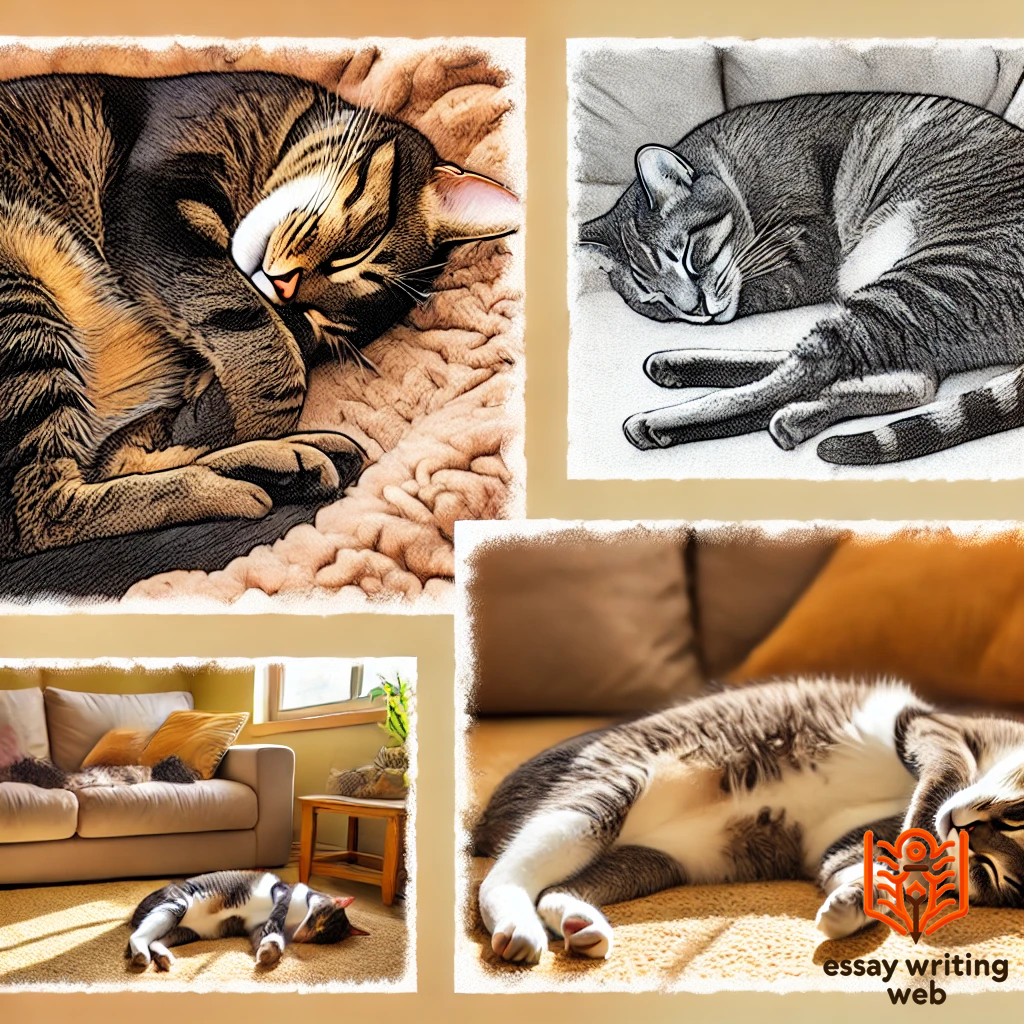
Cats have sensitive digestive systems, and some common human foods can be toxic or harmful to them. Understanding which foods to avoid is crucial for keeping a cat healthy and safe.
One of the most dangerous foods for cats is chocolate, which contains theobromine. Even small amounts can lead to vomiting, diarrhea, and, in severe cases, seizures or death. Onions, garlic, and chives are also toxic to cats, as they can damage red blood cells and lead to anemia. These ingredients are often found in many cooked foods and should be strictly avoided.
Grapes and raisins are known to cause kidney failure in cats, though the exact mechanism remains unclear. It’s important to avoid giving cats any amount of these fruits. Caffeine found in coffee, tea, and soda can cause rapid heart rate, restlessness, and even muscle tremors in cats. Alcohol, even in small doses, is highly toxic and can lead to respiratory failure, coma, or death.
Additionally, dairy products like milk, cheese, and yogurt, although commonly associated with cats, can cause digestive issues, as many adult cats are lactose intolerant.
In conclusion, being mindful of harmful foods and providing a balanced, cat-friendly diet is essential for the well-being of your feline companion.
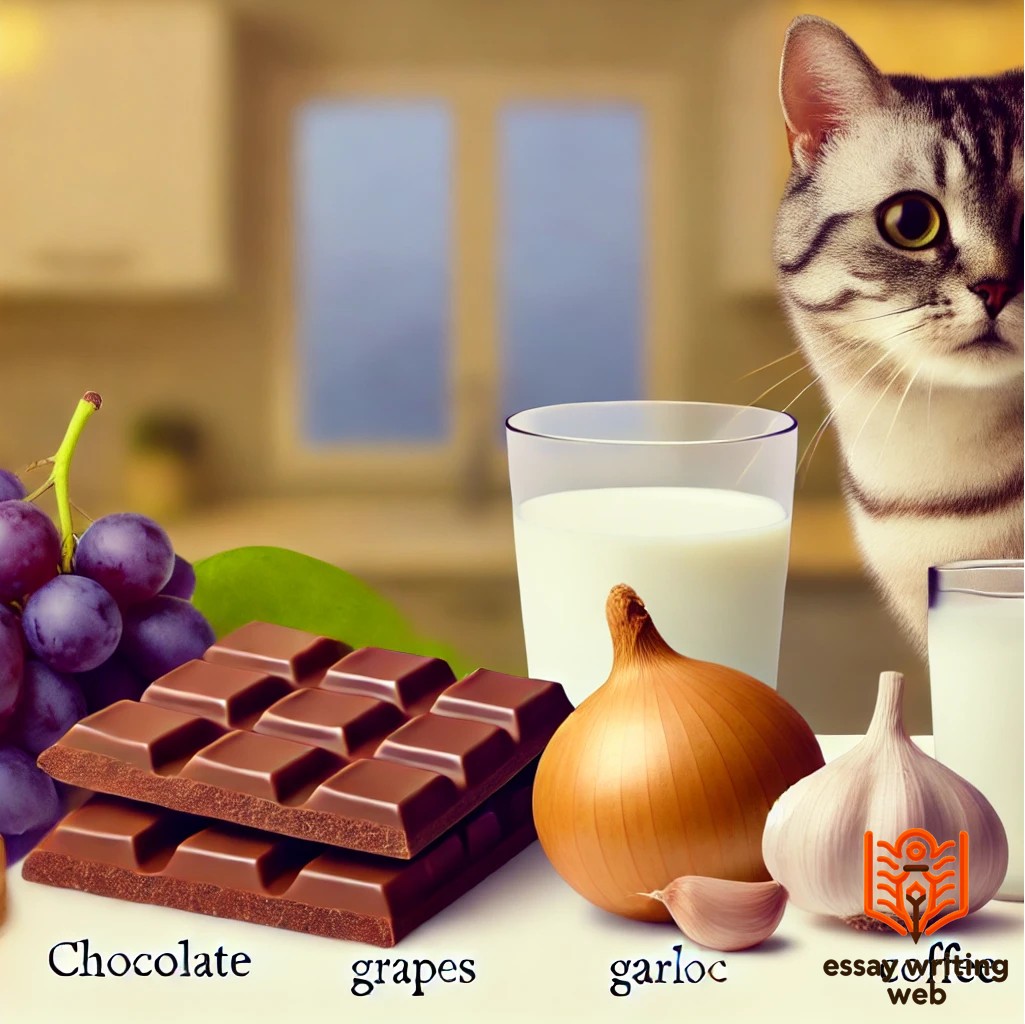
Cats have played a significant role in human life for thousands of years. Revered in ancient civilizations, such as in Egypt, where they were considered sacred, cats have since evolved into cherished companions in homes worldwide. Their role extends far beyond that of a pet; cats provide emotional, social, and even health benefits to their human counterparts.
As companions, cats offer a sense of comfort and companionship. Their independent yet affectionate nature makes them ideal pets for people of all ages. Cats are often known to form strong bonds with their owners, offering affection through purring, rubbing against their humans, or simply sitting close. These simple gestures can help reduce stress and anxiety, making cats beneficial for emotional well-being.
In addition to emotional support, studies have shown that owning a cat can have positive effects on physical health. The calming effect of a cat's presence can help lower blood pressure and reduce the risk of heart disease. Cats also serve as a source of entertainment and joy, especially with their playful and curious behaviors.
Historically, cats have played practical roles as well, particularly as natural pest controllers. Their hunting instincts allow them to keep homes free from rodents and insects, making them valuable additions to human life.
In modern times, cats have also become a part of popular culture, symbolizing grace, independence, and mystery. Whether as loyal companions, stress-relievers, or cultural icons, cats continue to enrich the lives of people around the world, leaving an indelible mark on human society.
